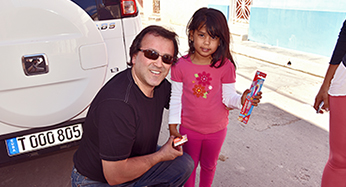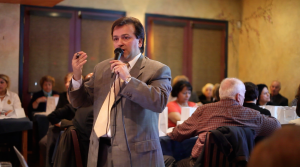![Before and after images of our patients who got their smile back. A smile is a facial expression formed by flexing the muscles near both ends of the mouth and by flexing muscles throughout the mouth.[1] Some smiles include contraction of the muscles at the corner of the eyes (also known as 'Duchenne' smiling). Among humans, it is an expression denoting pleasure, sociability, happiness, or amusement. This is not to be confused with a similar but usually involuntary expression of anxiety known as a grimace. Smiling is something that is understood by everyone, regardless of culture, race, or religion; it is internationally known. Cross-cultural studies have shown that smiling is a means of communication throughout the world,[2] but there are large differences between different cultures. A smile can also be spontaneous or artificial. We smile because we are happy, and we frown because we are sad. But does the causal arrow point in the other direction, too? A spate of recent studies of botox recipients and others suggests that our emotions are reinforced—perhaps even driven—by their corresponding facial expressions. No one yet knows why our facial expressions influence our emotions as they seem to. The associations in our mind between how we feel and how we react may be so strong that our expressions simply end up reinforcing our emotions—there may be no evolutionary reason for the connection. Even so, our faces do seem to communicate our states of mind not only to others but also to ourselves. “I smile, so I must be happy,” Grob says.](http://denturaid.com/wp-content/uploads/2014/07/before-after.jpg)
Before And After
- Home
- Before And After
-
Dental Financing Program
Now you can afford with our Dental Finance Programs, you can get the treatment or product you need or want now.Read more -
Dental Implants
Before and after images of our patients who got their smile back.Read more -
Opening Hours
-
Monday - Friday9.00 - 18.00
-
SaturdayBy appointment
-
Phone Number:416-590-7766
-
Monday - Friday
Denturaid By Design Inc.
You can always reach us through phone or e-mail.
-
Denturaid By Design Inc.
-
4950 Yonge Street,
Unit 36 -
North York, Ontario,416.590.7766
-
M2N 6K1
© Copyright | 2014 | Denturaid by Design Inc.















